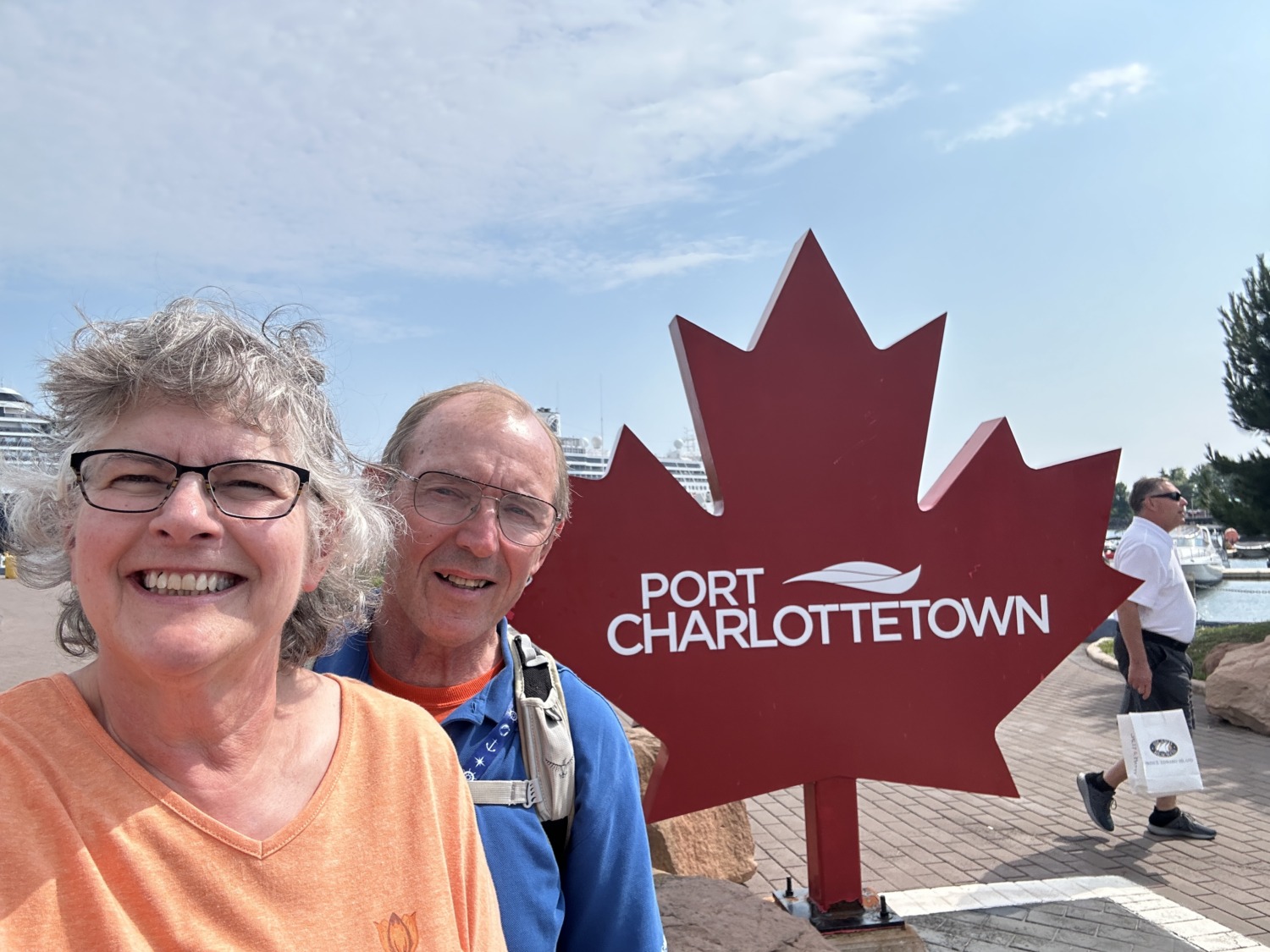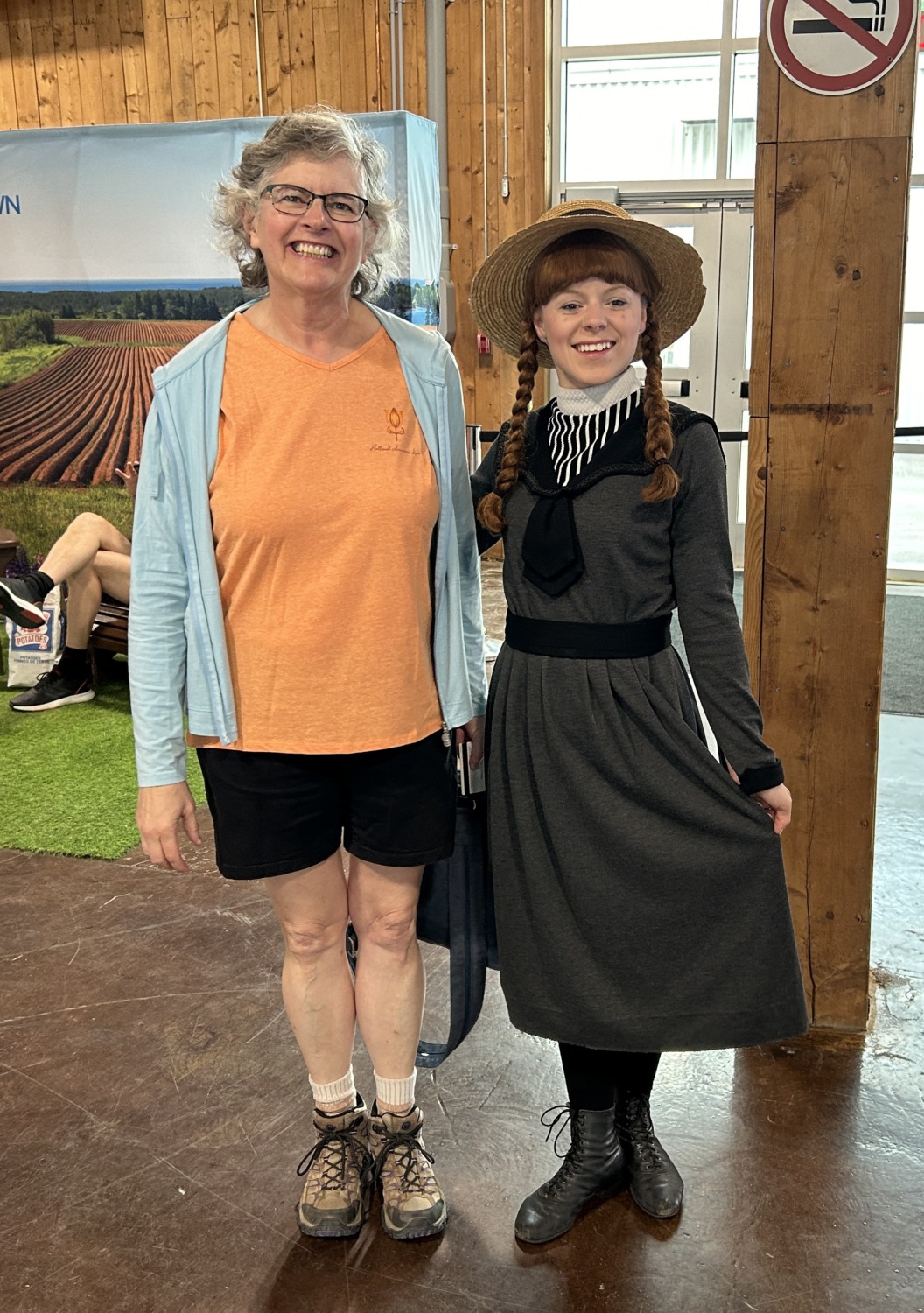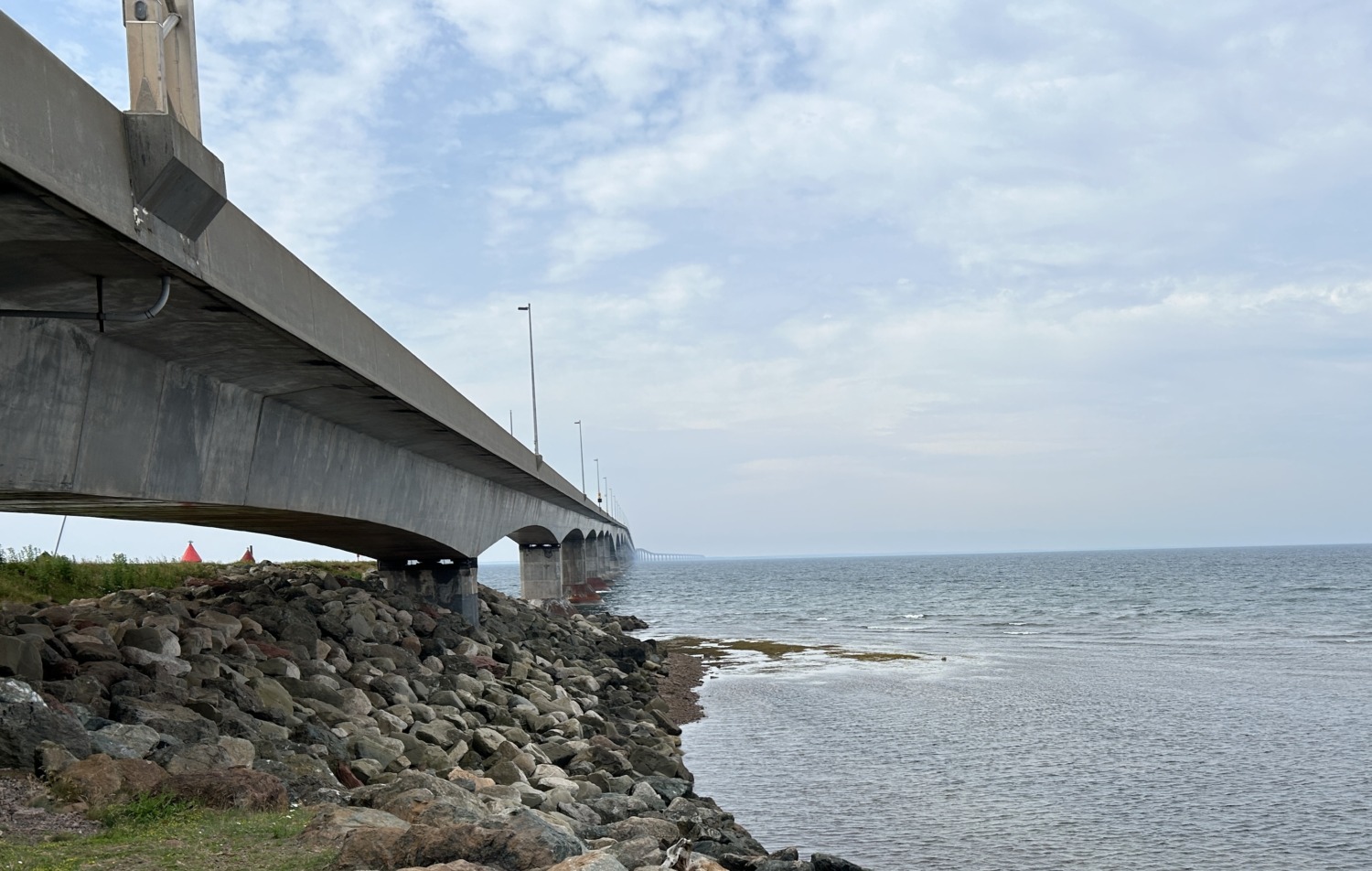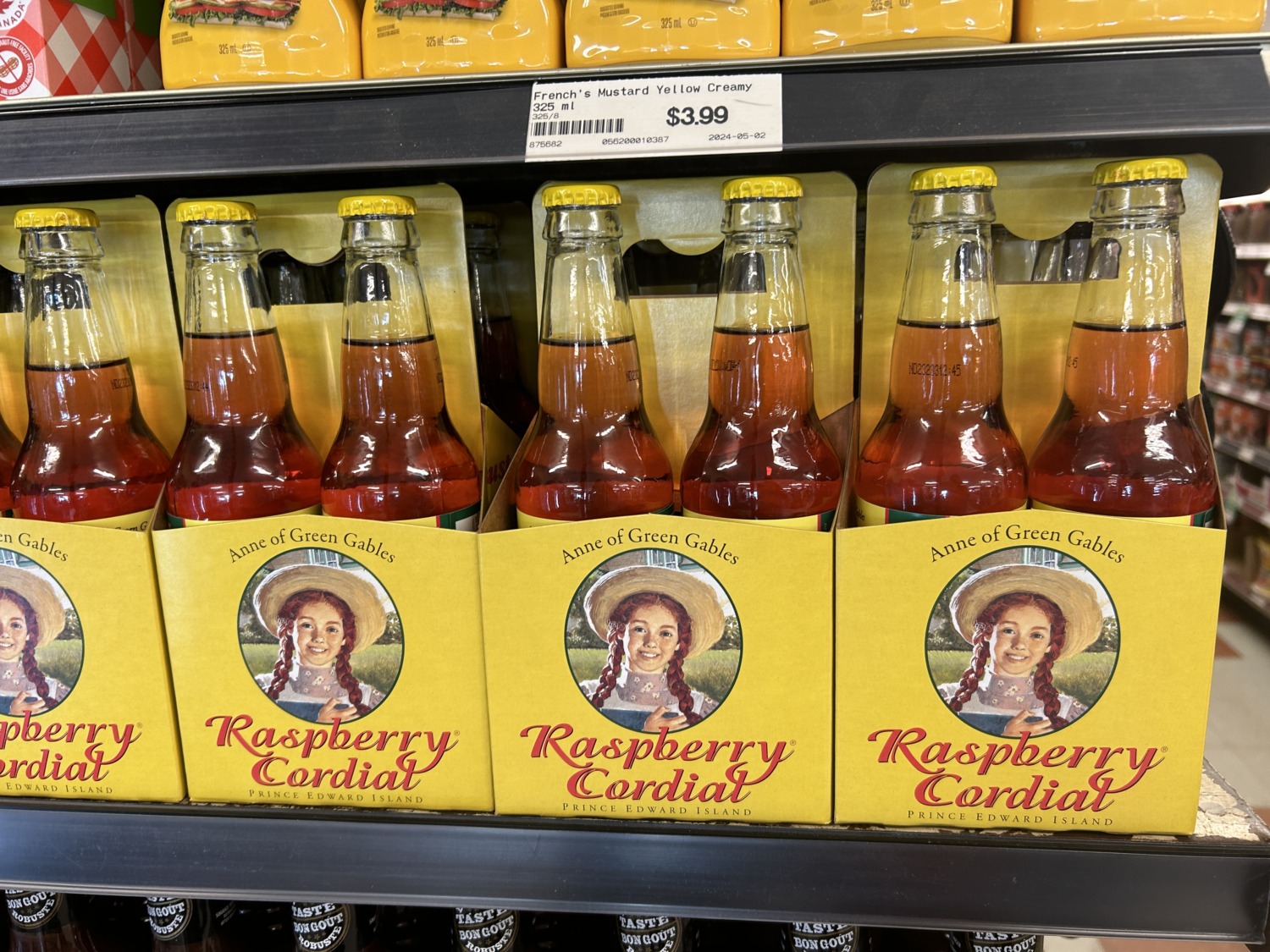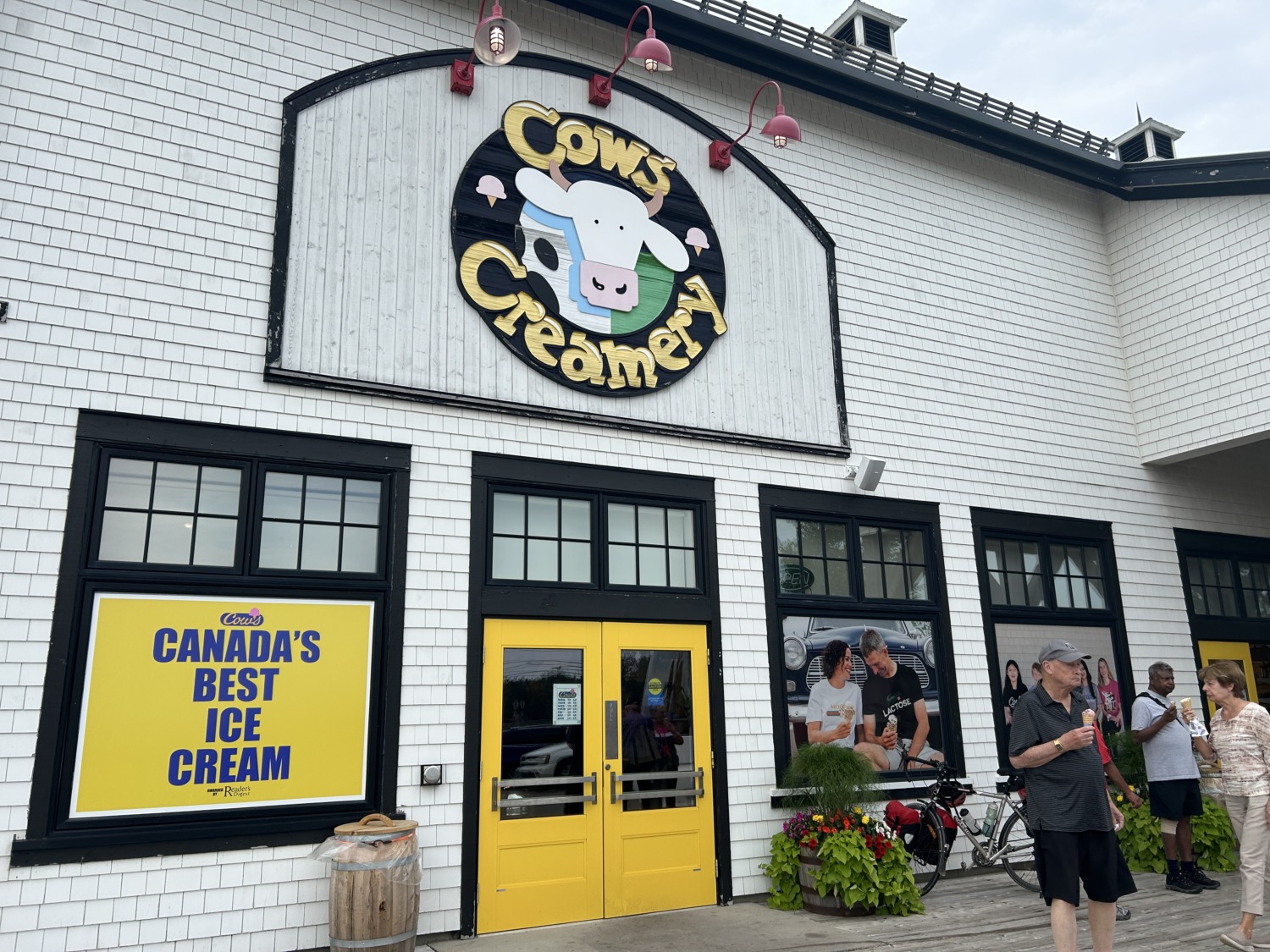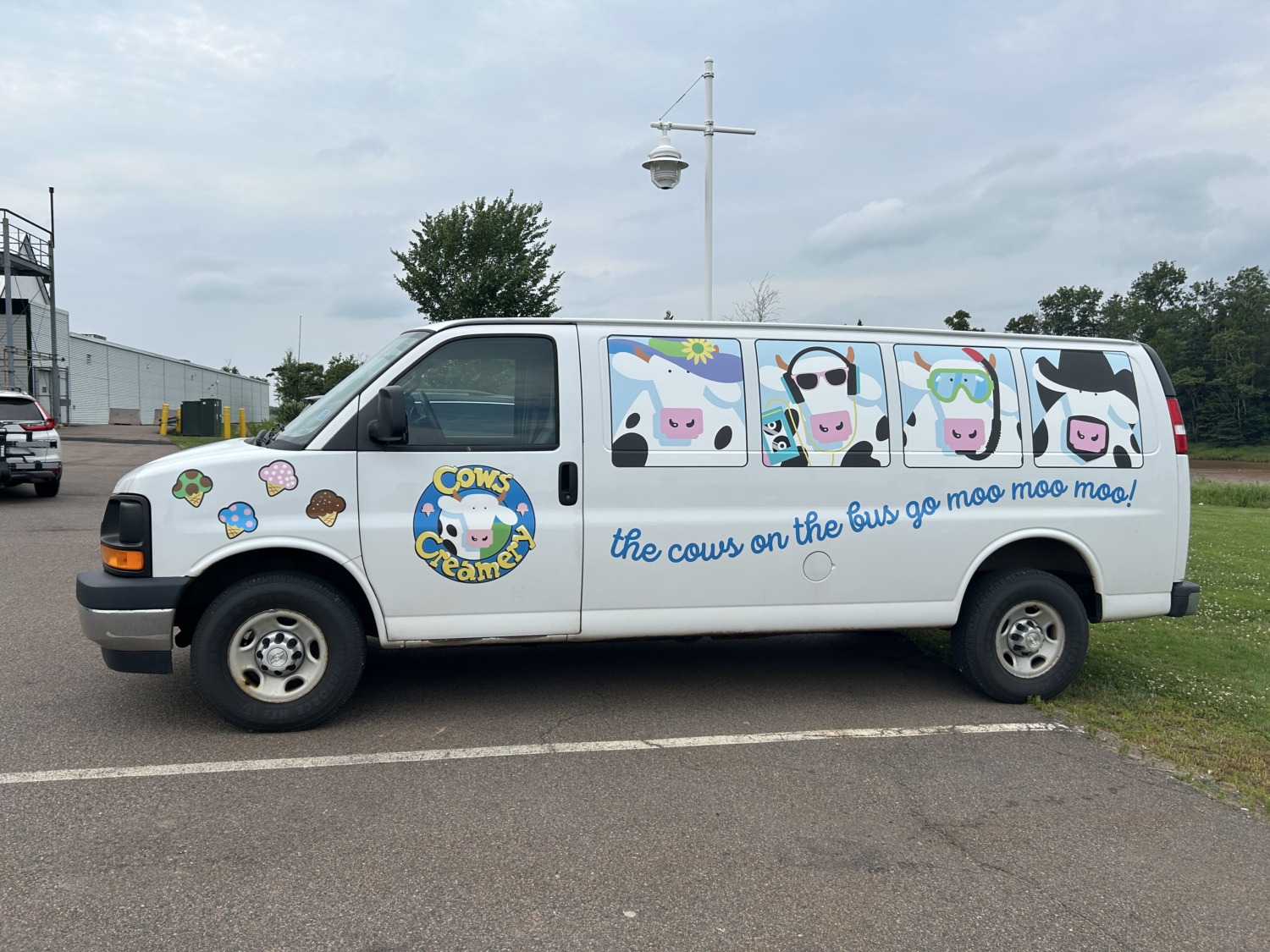Tom and I continued our exploration of the Canadian Maritimes by traveling to Prince Edward Island, the smallest province in Canada. Prince Edward Island is the smallest province in land area and population, but is also the most densely populated. Its nickname is “The Birthplace of Confederation” because it hosted talks among the maritime provinces about forming their own country in 1864. Although those talks went nowhere, they set the stage for the confederation that happened a few years later. Ironically, Prince Edward Island didn’t like the terms of confederation and refused to join at first. Finally, they became the ninth province to join the Canadian confederation in 1873.
We took a shore excursion called the “Top 10 of Prince Edward Island,” although we only went to six places. I guess the “Top Six of PEI” just doesn’t have the same ring to it. Our guide, Walter, was very good. He gave us lots of facts and figures. Prince Edward Island has a population of 178,000. The main industries are agriculture, aquaculture, and tourism, which are all seasonal. Year-round jobs come primarily from government, education, and medical care.
Tom and I really saw the tourism aspect on our tour around Prince Edward Island. The people were extremely welcoming and were doing everything they could to separate us from our Canadian dollars. There was a local goods market set up in the pier terminal. Dancers, greeters, and singers all welcomed us as we walked off the ship. A potato and Anne of Green Gables stood on the pier so we could get pictures. Souvenir shops were everywhere. They are definitely making as much money as they can during the short tourist season.
Our tour started with the highlights of Charlottetown, the capital of Prince Edward Island. The capital has 40,000 people so it is a good-sized city. There are two universities and a large hospital. As with most places, housing prices have really soared lately, so many people continue to live outside the city and commute in to work.
Our first stop on the tour was the Confederation Bridge. The bridge opened in 1997 and is the longest bridge in Canada and the the longest bridge over salt water that freezes in the world. The Confederation Bridge crosses the Northumberland Strait and connects Prince Edward Island to New Brunswick. It doesn’t cost anything to use the bridge to go to Prince Edward Island. To leave, however, it costs $50. Must be why the population of Prince Edward Island is growing.
We admired the engineering of the eight-mile-long bridge and enjoyed the tourist shops built around it. I found a spoon right away. I like to buy my spoon as soon as I can so I don’t have to do any more souvenir shopping. Walter described how the bridge had changed life on Prince Edward Island forever. Because it is now connected by land to the rest of Canada, it has chain, big-box stores. There are a lot more tourists, especially RVers. People can get on and off the island all year. When weather temporarily closed the bridge, people now complain about shortages in the stores. Before, shortages were a fact of island life.
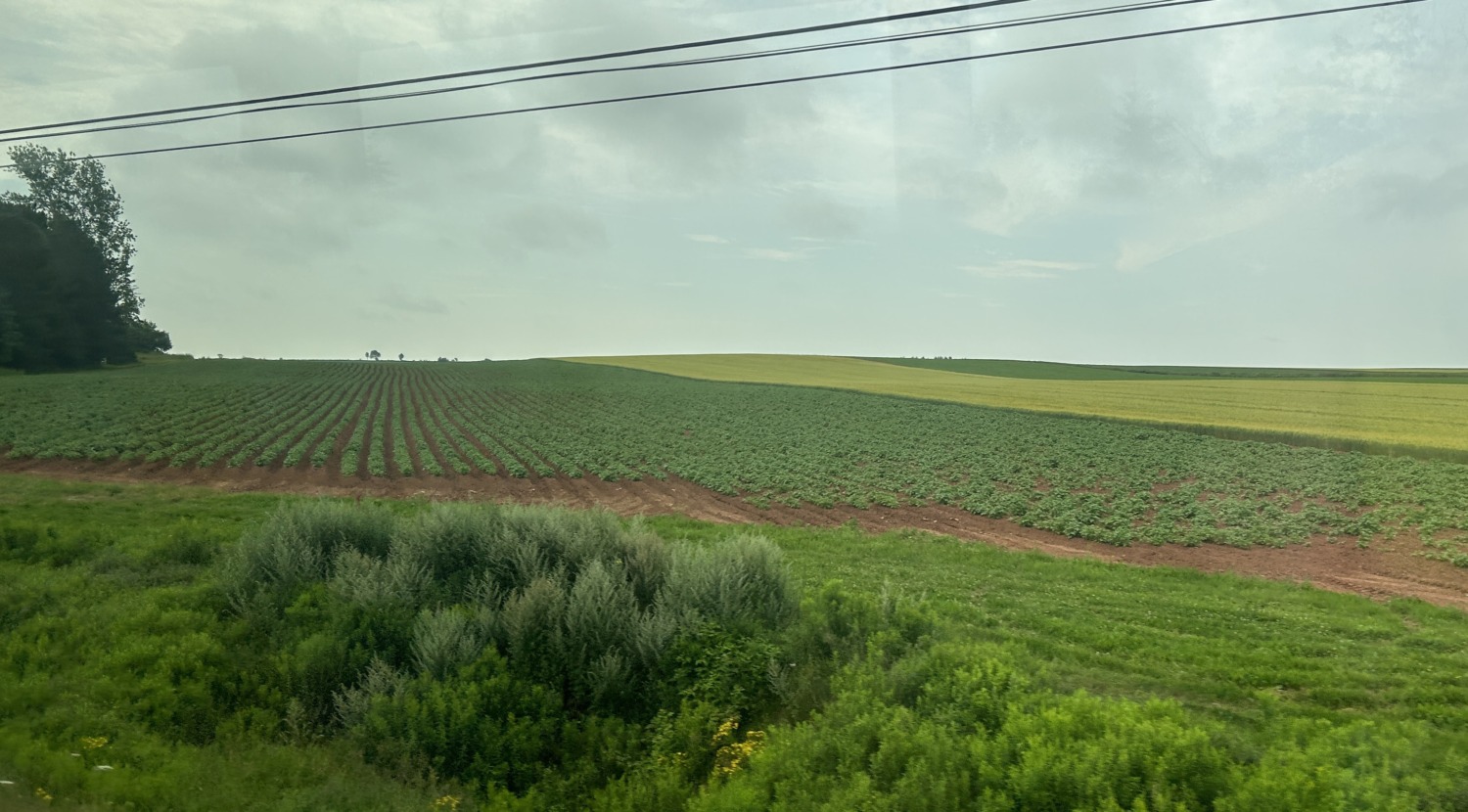
As we rode the bus through Prince Edward Island, we saw lots of agricultural fields. Over half of the land on the island is farmed. Potatoes are the #1 crop grown on the island and we saw lots of potato fields. We also saw hay and mustard fields. Dairy farming is also big and Prince Edward Island is known for its ice cream.
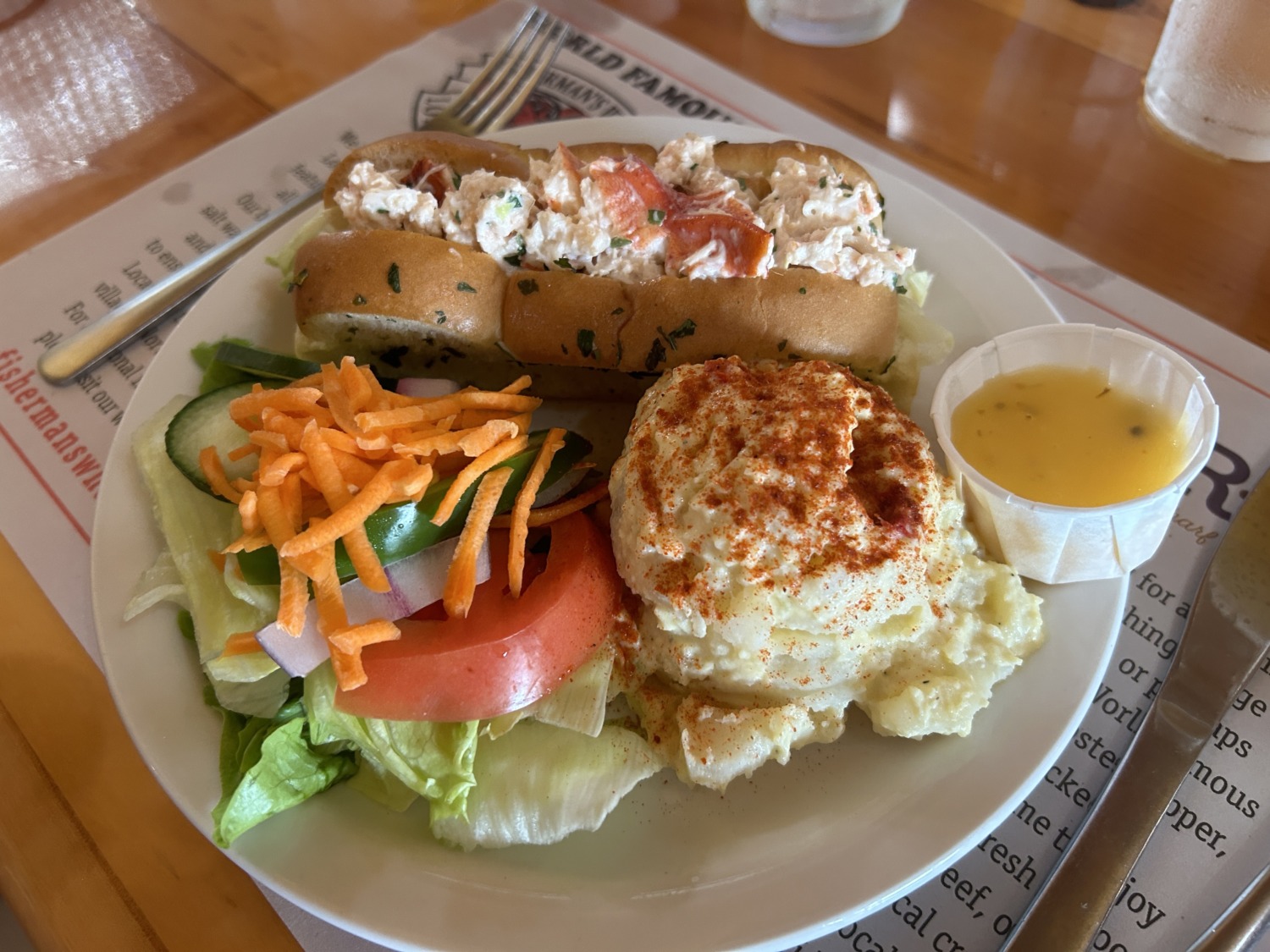
Our next stop was Fisherman’s Wharf Restaurant and Gift Shop in North Rustico for lunch. The advertised meal was a lobster roll. With my sensitivity to shellfish, Tom and I both opted for chicken salad instead. Better safe than sorry this far into our trip. The chicken salad was delicious and lunch was very good. Everyone else at our table said the lobster was also delicious and fresh.
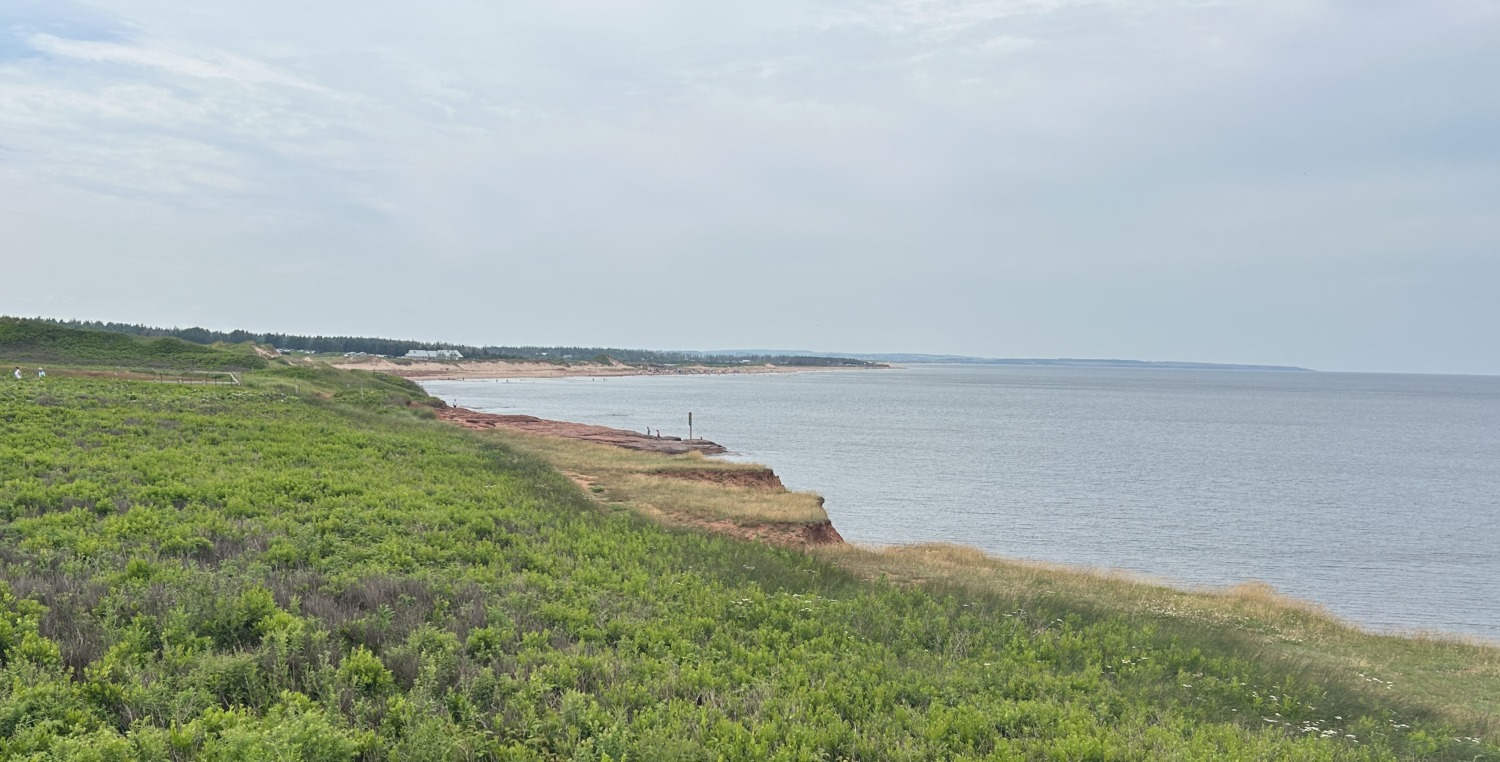
After our lunch, we continued our tour with a stop at an overlook at Prince Edward Island National Park. The beaches on this north shore park are very busy on hot days because the ocean is shallow and the water warms up quickly here. From the overlook we could see lots of people at the beach. We could also see the erosion on the shore. Prince Edward Island is shrinking every year as its sandstone shores erode from the ocean waves.
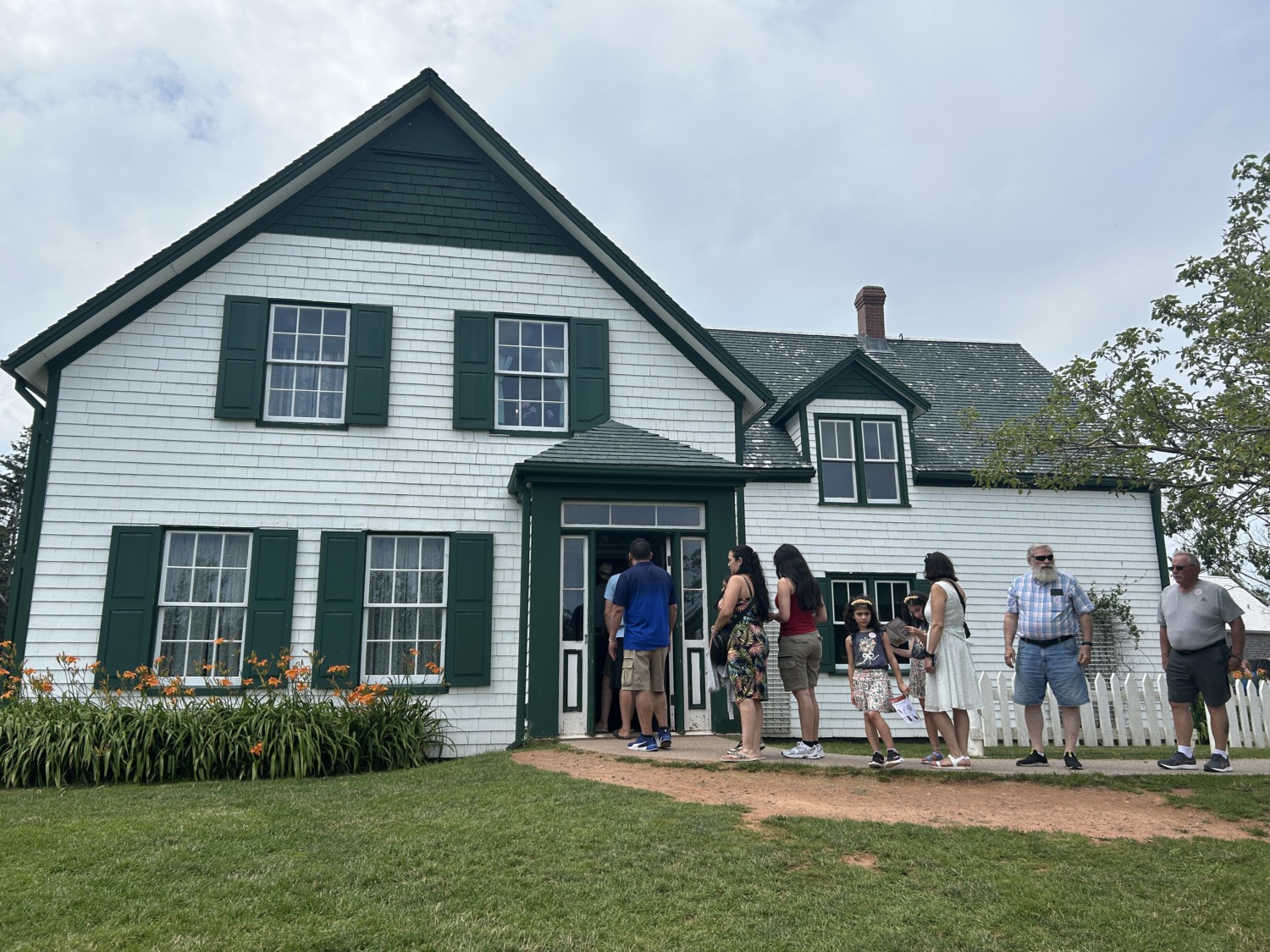
We continued our tour by driving the very short distance to Green Gables Heritage Place. Green Gables Heritage Place is a 19th century farm and literary landmark. Green Gables served as the setting for the Anne of Green Gables novels by Lucy Maud Montgomery. The Green Gables house is recognized as a Federal Historic Building inside Prince Edward Island National Park.
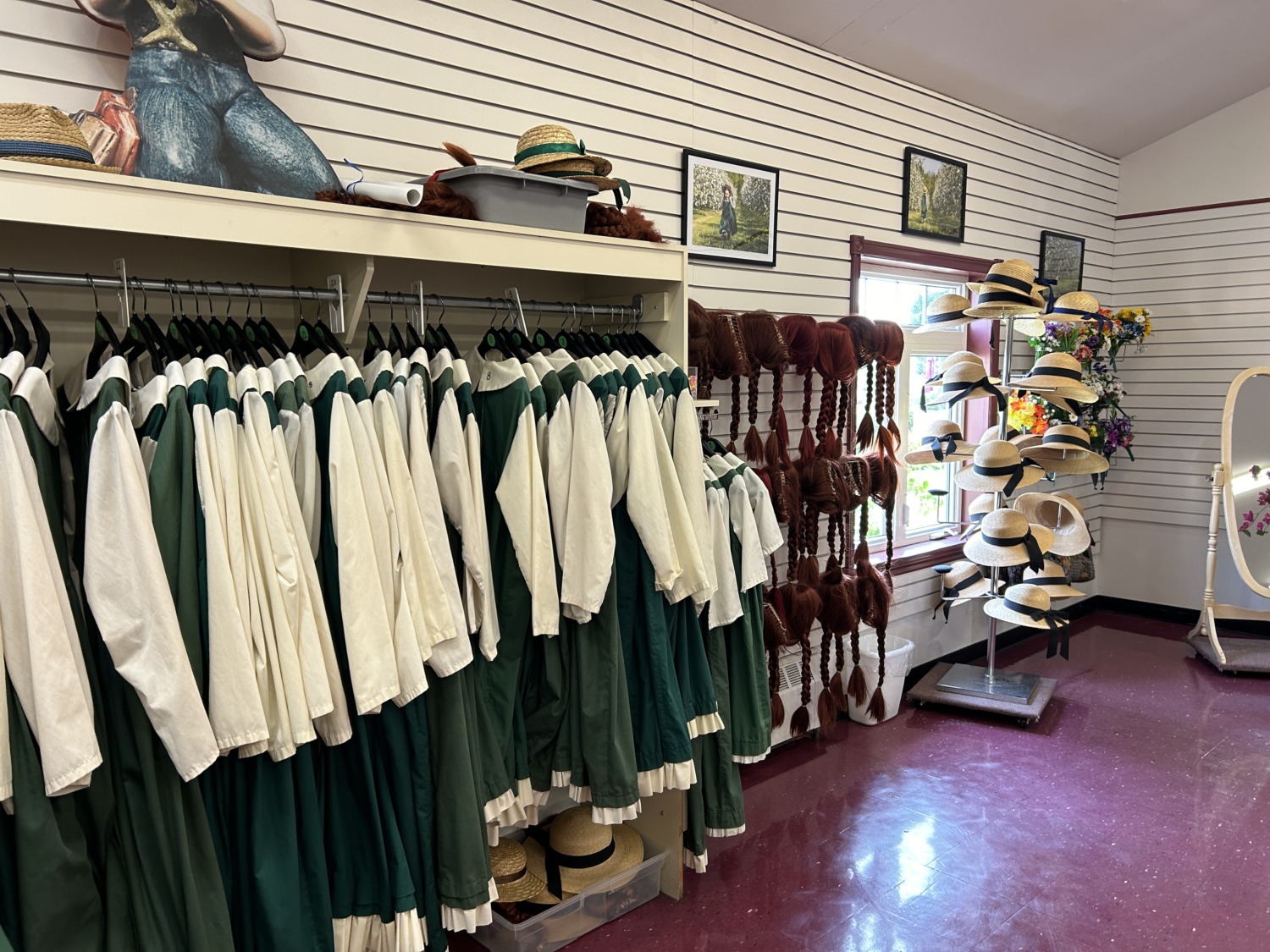
The house was initially erected during the 1830s, by the MacNeil family, relatives of Montgomery, who was born near the homestead. Interest in the Green Gables property grew in the decades after Montgomery published her novels. The Canadian government purchased the house in 1936 and, today, it is furnished to resemble the Green Gables depicted in Montgomery’s novels. There are hiking trails, a café, a museum about Lucy Maud Montgomery, and the ubiquitous gift shop.
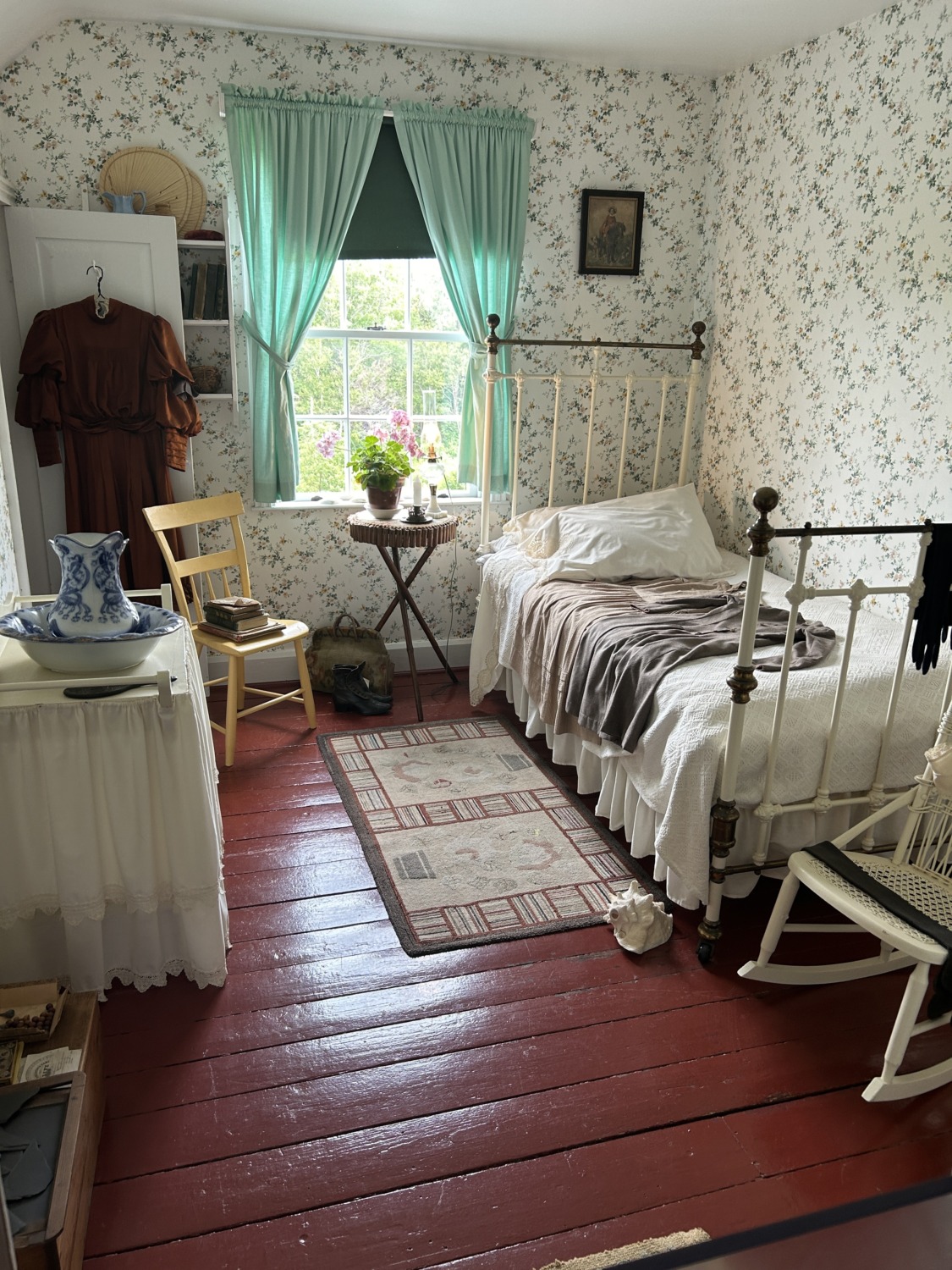
Although I read the books, I knew very little about Lucy Maud Montgomery. She had a fascinating life. I looked for a biography of her in the bookstore, but could only find a little pamphlet. Although her books are cheerful and optimistic, Lucy’s life was very difficult. She was raised by her grandparents and married only after both of them died. Her husband was a minister who suffered from manic depression and was not at all supportive of Lucy’s writing career. Lucy’s publisher stole her royalties and refused to pay them even after being ordered to through a court case.
You would never know any of that from reading her books. Anne of Green Gables remains a favorite character today and there have been multiple movies and several television programs based on the character. The Green Gables house is the #1 tourist site on Prince Edward Island.
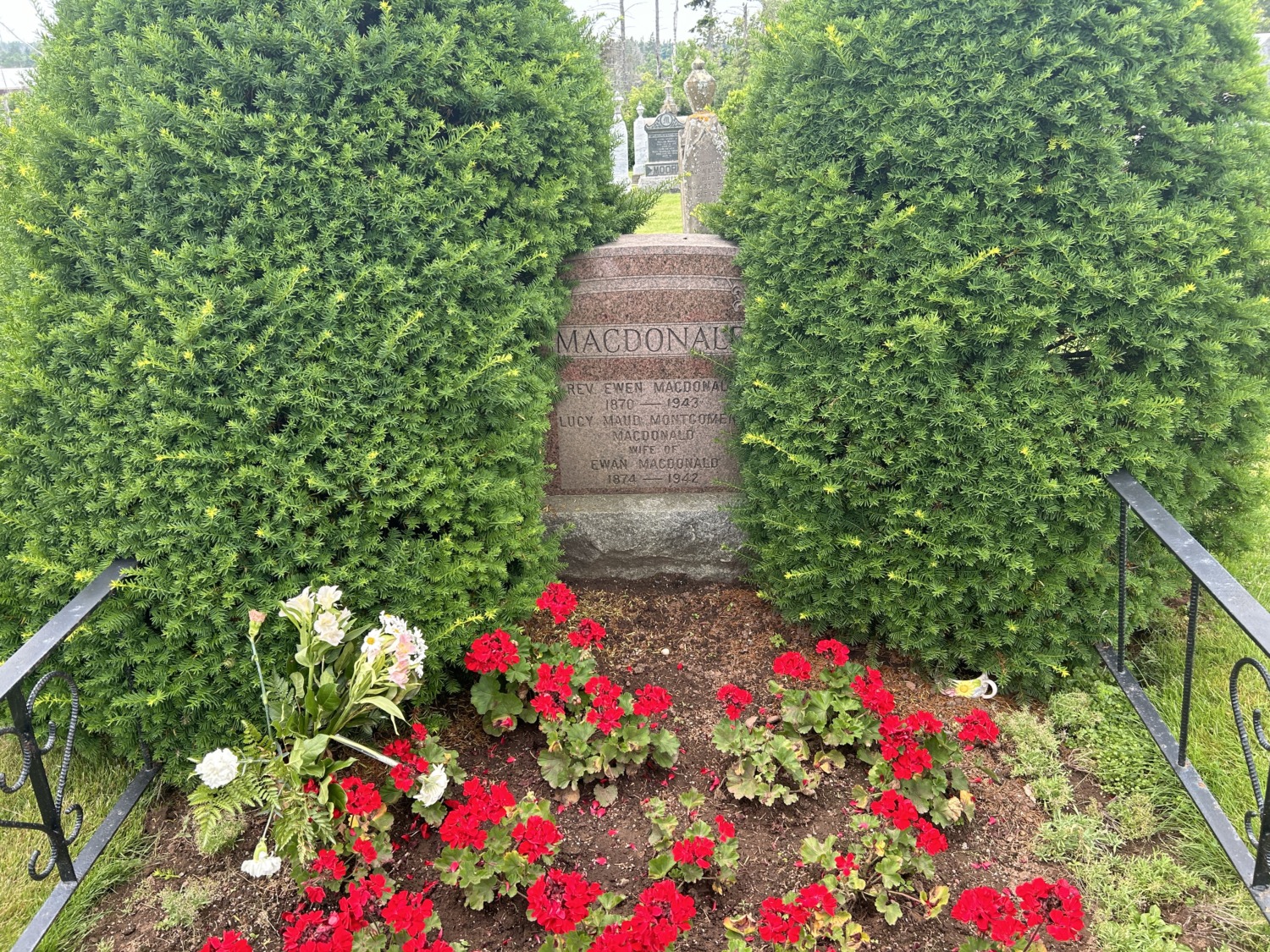
We had some free time at Green Gables, so Tom and I took a walk on one of the hiking trails. Tom and I followed it to Lucy Maud Montgomery’s burial site where we paid our respects. Then we headed back.
Our final stop for the day was Cow’s where we were able to pick out a scoop of ice cream in a cone. Tom got his one scoop of vanilla and was happy. I couldn’t decide on one flavor and ended up paying extra for a second scoop. The flavors have fun names that don’t really describe what they are: Gooey Mooey, Fluff n Udder, Messie Bessie, Wowie Cowie. I got Messie Bessie which is chocolate ice cream, moo crunch, Oreo cookie, and English toffee and Wowie Cowie which is vanilla ice cream, English toffee marble, chocolate flakes, and Moo Crunch. I still don’t know what Moo Crunch is, but both flavors were creamy and delicious.
We especially enjoyed our ice cream because it was the warmest day we had since we left London. Ice cream is always best when the temperature is over 80. We climbed back on the bus and headed back to the ship, content that we had seen the best of Prince Edward Island.

